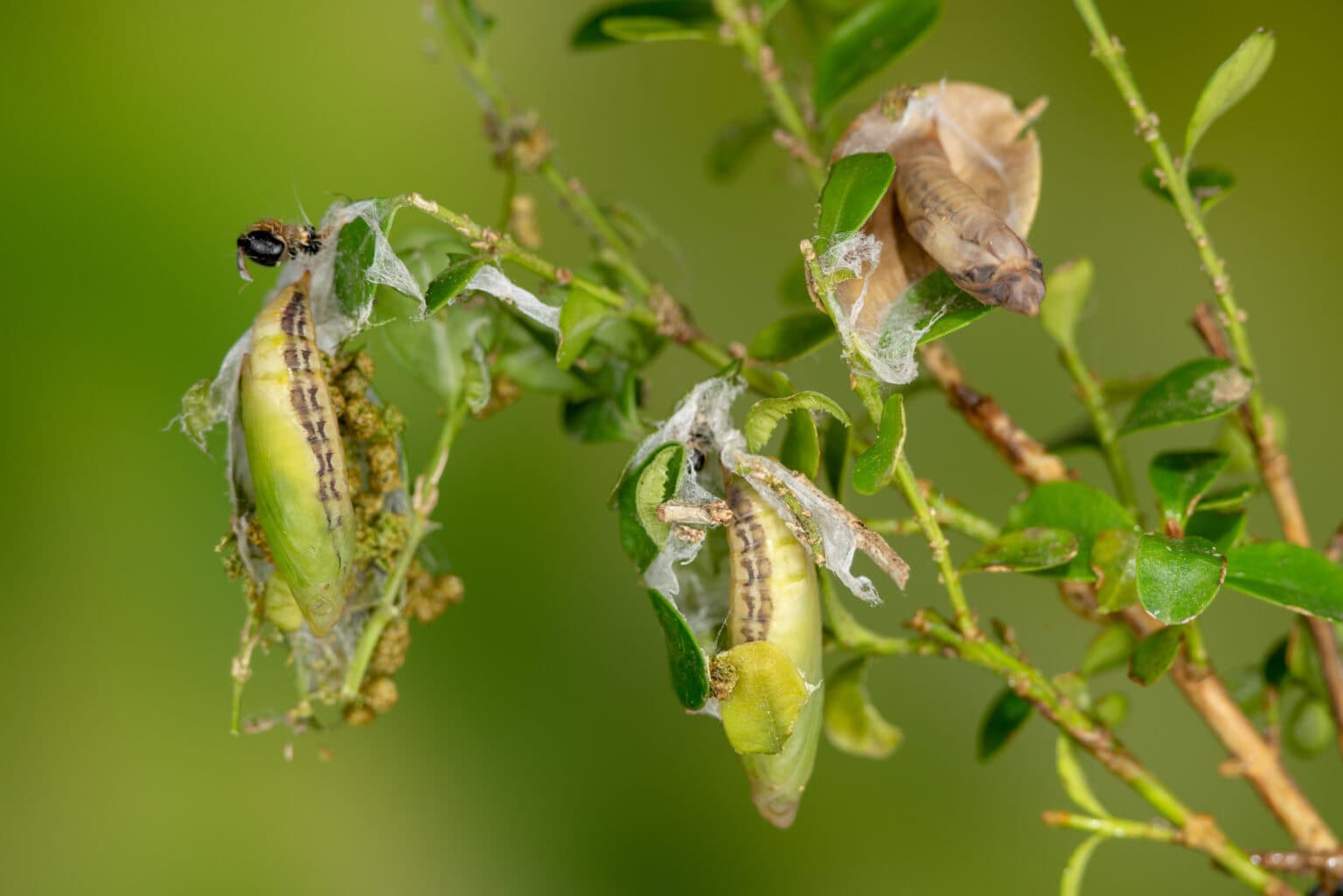Learn to recognize the signs of this plant pest and what to do if you see one.
Box tree (boxwood) moth is an invasive insect species whose larvae feed primarily on boxwood plants. This new pest only recently arrived in the United States and has the potential to spread far and wide, causing severe damage to the ornamental landscape. By learning to recognize the signs and symptoms of box tree moths, you can help slow the spread of this devastating pest. While Better Boxwoods have a higher tolerance to the box tree moth than common boxwood (Buxus sempervirens), management is still important. Learn how to protect boxwood plants and what to do if you suspect box tree moths are present in your garden.
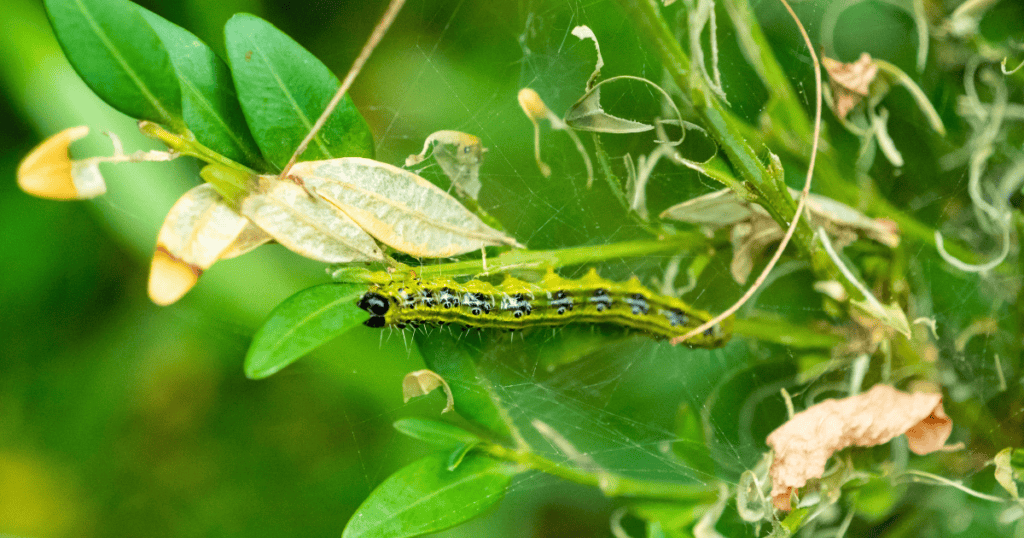
What is the Boxwood Moth
The box tree moth, Cydalima perspectalis or BTM for short, is a species of moth native to eastern Asia. Adults have white wings spanning 1¾ inches and surrounded by a thick brown border. The larvae of box tree moths are yellow to bright green caterpillars with a black head and dark stripes and spots. They are heavy feeders and can quickly defoliate entire boxwood plants. Box tree moth caterpillars have also been observed to feed on plant bark after the foliage has been depleted, which can further impact plant health.
While boxwoods are hardy plants and can often rebound from defoliation, heavy and repeat infestations can weaken and ultimately kill plants. Box tree moths have been observed to produce two generations per year in New York and can likely produce a third and even fourth generation in warmer locales. This is significant, as the overall damage from an infestation increases with each generation.
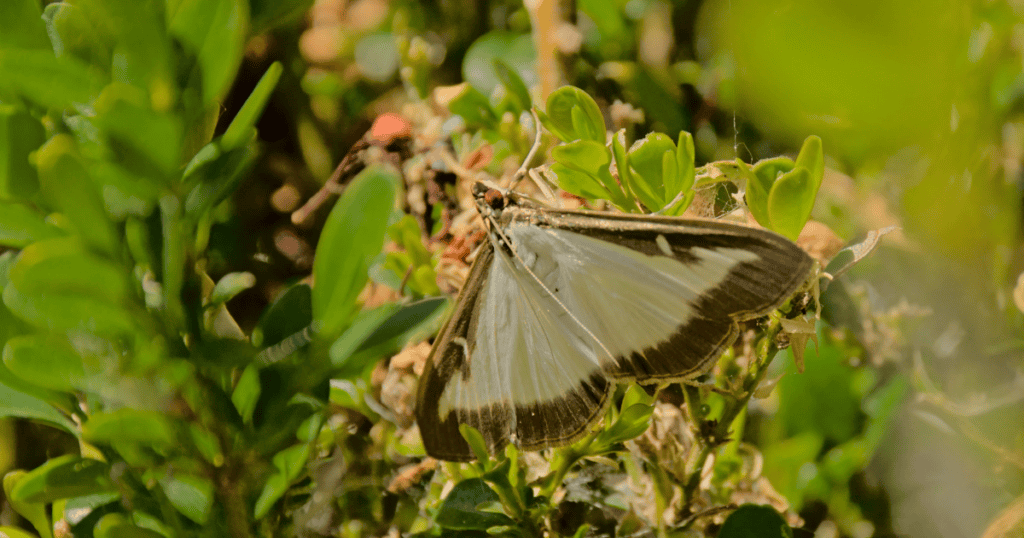
What Plants Are Impacted by Boxwood Moth
Box tree moth larvae feed primarily on plants in the genus Buxus. All Buxus species are susceptible, however, observations in Europe suggest that box tree moths prefer common boxwood (Buxus sempervirens) over Asian types. Also, while Asian boxwood species do sustain damage, they appear to be more tolerant to box tree moth caterpillar feeding. These species coexist with box tree moths naturally and have likely developed adaptations to cope with feeding damage.
In their native range, box tree moth larvae have been observed feeding on plants adjacent to boxwoods only once boxwood foliage has been depleted. These alternate food sources include burning bush (Euonymus alatus), Japanese spindletree (E. japonicus), purple holly (Ilex chinensis), and orange jessamine (Murraya paniculata). There have been no problems observed on alternate hosts in Europe or North America.
Are Better Boxwoods Resistant to the Boxwood Moth
In preliminary studies, the four varieties of Better Boxwood demonstrated a high degree of tolerance to box tree moth caterpillar feeding. This is likely due to the presence of Asian boxwood genetics in the parental breeding lines of Better Boxwood varieties. In the study, both Asian boxwood species and Better Boxwoods varieties sustained less feeding damage than other tested species. The plants remained green, with damage primarily isolated to young leaves.
Where is Boxwood Moth Found
The box tree moth has spread far beyond its native range in east Asia. The insect was reported on the German-Swiss border in 2006 and within ten years had spread across Europe, northern Africa, and western Asia. Box tree moth was first documented in Canada in 2018 and reported in the United States three years later. It has since been confirmed in four states: New York, Massachusetts, Michigan, and Ohio.
Box tree moth has the potential to spread rapidly through the United States and Canada, as it has in Europe. Given the distance between known infestation sites, box tree moths are likely already present in other areas of the US. Newly introduced insect and disease species like box tree moth can be particularly problematic because they arrive without the natural pressures that keep their populations in check, such as their own predators and diseases.
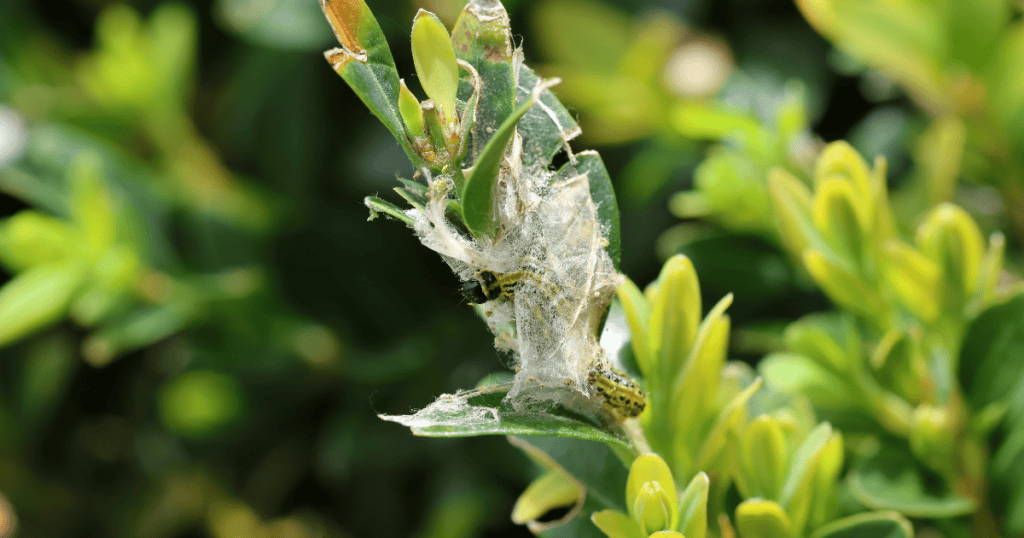
What to Look for When Monitoring Your Boxwoods
Homeowners are being encouraged to monitor boxwood plants for signs of the box tree moth. With help from gardeners, scientists can locate and react more quickly to new box tree moth infestations and take steps to stop its spread. While young caterpillars can go unnoticed due to their small size and camouflaged coloration, signs of box tree moth damage are more readily observed.
Damage due to box tree moths differs considerably from that caused by other common boxwood pests. Look for these signs and symptoms:
Leaf Damage
- Skeletonization – Evidence of young caterpillar feeding is subtle, giving leaves a papery or peeling appearance. They may skeletonize leaves on one or both surfaces.
- Curlicue Damage – Older caterpillars eat the entire leaf, removing large sections of the leaf surface area and commonly leaving behind the leaf edge which curls into a distinctive curlicue as it dries.
- Defoliation – Over time, box tree moth caterpillars can completely defoliate boxwood shrubs, leaving behind bare stems.
Silk Webbing
- Larval Nests – Larvae often build small, messy nests consisting of silk webbing and leaves gathered into a loose enclosure. Look for these in the shrub’s interior.
- Webbing – Older caterpillars produce more open, wispy webbing that may contain plant debris and frass.
Frass
- Insect Excrement – Frass is the name for insect waste, which looks like small, light green to brown pellets. Frass may collect among the foliage or webbing.
If you notice these signs of box tree moths, look closer for the insects themselves. Adult moths are most active at night and difficult to spot, but larvae and pupae can be found within the plant canopy.
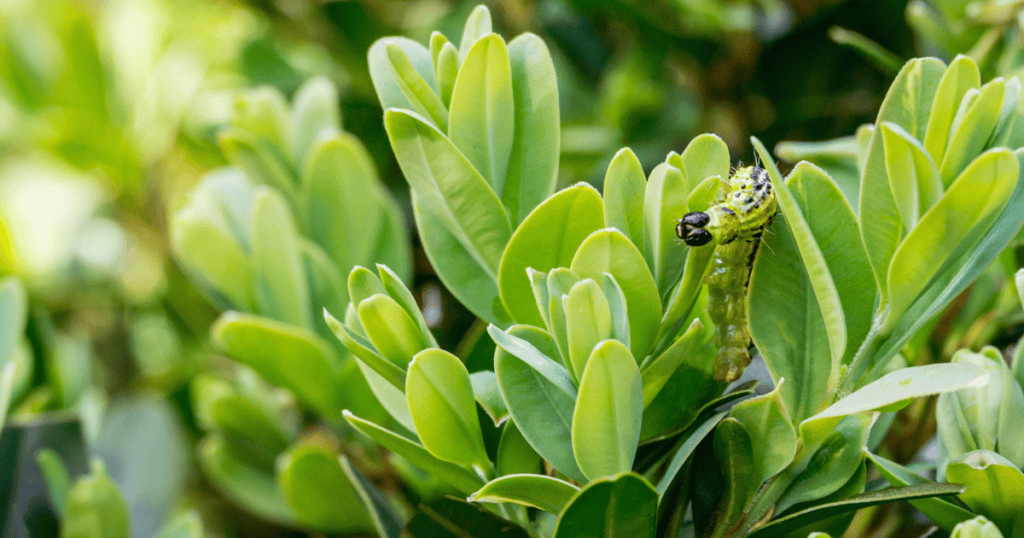
What to Do If You Suspect You Have Boxwood Moths
Help fight this devastating pest! Ongoing monitoring and detection will help researchers and state officials develop comprehensive management plans against box tree moth. This includes continuing to report infestations even in locations where box tree moths have already been documented.
Report sightings of box tree moths to your local Cooperative Extension Service office. An Extension specialist will submit a sample to confirm identification and help you determine the next steps to take. Management strategies may vary depending on your proximately to known infestations and may include:
- Removal: Trimming out infested boxwood branches or cutting back plants to the ground (established plants will regrow from the roots) removes larvae, pupae, and eggs. Double bag infested plant material in plastic before disposing of it in the trash.
- Monitoring: Ongoing monitoring for box tree moths uses pheromone traps.
- Insecticides: Treatment with approved microbial and chemical insecticides is highly effective against box tree moths. Insecticide applications should only be made to boxwoods with a confirmed box tree moth infestation.
- Prevention: Preventive insecticide applications may be recommended following removal of infested material and in locations very close to known infestations. Preventative insecticide applications outside these areas are not justified.
Given the recent arrival of this pest, management strategies vary by location and continue to be refined as more research is conducted. Some locations have quarantine measures in place. For the most current information for your area, work with your local Extension service.
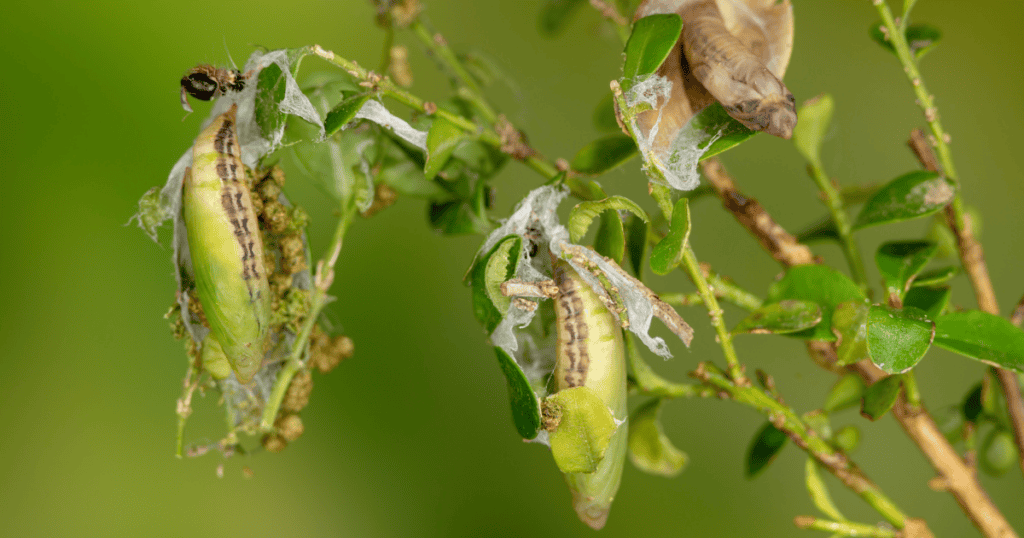
Looking into the Future
Boxwoods are used extensively throughout home gardens, historic sites, public gardens, and in the cut flower industry (think winter décor). As such, box tree moths are poised to cause significant damage. Early detection and management are key to protecting these valuable landscape plants. Fortunately, box tree moths are easy to manage with biological and traditional insecticides. And because not all boxwood varieties are equally susceptible, use of resistant and tolerant varieties like Better Boxwoods will likely play a role in the long-term management of this pest.

